Subscribe to our ▶️ YouTube channel 🔴 for the latest videos, updates, and tips.
Measurement of Length
Length tells us how long an object is.
In our daily life, we measure the lengths of various objects such as cloth, electric wire, garden etc.
In olden days, lengths were measured using body parts like fingers, hand-span, arm span, foot, cubit and pace.
We can measure objects by comparing them with other objects like clips, ribbons, pencils or using our body parts for example handspan, foot, cubit and stride. These are non-standard units of length.
In ancient times, people used hand spans, cubits, etc., as units of measurement.
We sometime use our body parts like finger, hand, foot and forearm to measure length of smaller objects.
We see many things around us. Some are short in length like pencil, crayon or a toothbrush. Some objects are long like ladder, tree or buildings.
We have learnt to measure objects by using body parts like fingers, handspan, cubit and footspan. We can also compare length of two objects by using the body parts.
The distance between the tip of the elbow to the tip of the middle finger is called a cubit.
The length of the desk in classroom can be measured with cubits.
How many cubits is your desk? __________
Note: Cubit is a measurement from elbow to fingertip.
If you stretch your palm out, the distance between the tip of the thumb and the little finger is called a hand span.
The length of a wooden stick can be measured with hand span.
Measure the breadth of the table with the help of your hand span.
The breadth of the table is _____ hand spans.
How many hand spans is your desk? __________
How many hand spans is the blackboard in your class? __________
How many hand spans is your teacher's desk? __________
There were other units too such as foot span, stride, etc.
The length of the floor in the classroom can be measured with footspan.
Is your teacher's stride the same as yours?
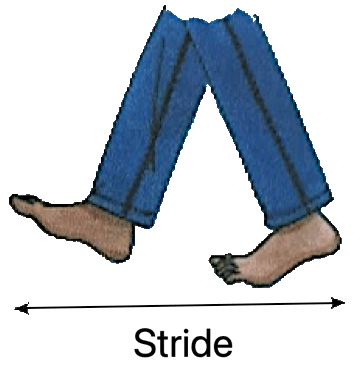
The answer is no! This is because stride of all people is not the same as some people have longer feet and legs than others. So, we need to have one uniform unit for measuring length.
Personal Unit:
Finger, Cubit, pace and hand span are called personal units.
Look and learn:
|
James measured length of this table top as six hand-spans. | |
|
His uncle measured it as four hand- spans. | |
|
Lisa measured length of the wall as ten paces. | |
|
Her mom found it to be seven paces long. |
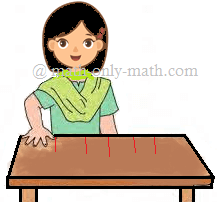 |
When two persons measure the length of an object using hand-span, cubit or fingers or pace their answers are generally different. This is because the sizes of hand-span, cubit, pace and fingers are different for different people.
Measuring
Lengths Using Objects:
We can also use different objects like clips, pencils, ribbons, matchsticks to measure the length.
Using Matchsticks
How long is this straw? Let us measure its length using matchsticks.
This straw is 7 matchsticks long.
How long is this eraser?
How long is this painting brush?
Measure your toothbrush with a matchstick.
Measure the length of the following using matchsticks.
(a) Your pencil is _____ matchsticks long.
(b) Your pencilbox is _____ long.
(c) Your notebook is _____ matchsticks long.
(d) Your ruler is _____ matchsticks long.
Using Paper Clips
The length of the pencil is about 8 paper clips.
The length of the pencil box is about 9 clips.
Using Pencils
The length of the desk box is about 4 pencils.
Measure your belt with your pencil.
The belt is _____ pencils long.
Using Ribbons
The length of the cricket bat is about 2 ribbons.
Arbitrary Units:
We can measure the length of an object by using a rod, a pen, a pencil, a paperclip, a pin etc.
A rod, a paper clip, a pencil, a pen etc. are called arbitrary units.
Look at the following pictures:
Both the children find the length of the pen as 4 pins.
Both the children find the length of the stick as 3 pencils. If two persons measure the length of an object by using an arbitary unit such as pencil, they get the same answer. But if the units (here pencils) used by two persons differ in length, then the answers would differ.
Therefore, there is a need for some standard unit that gives the same result of measurement no matter who measures the length.
Measurement:
To find the length, height or weight of things is called measurement.
Standard Units
Metre is the standard unit of measuring length.
To measure the length, we always use an iron or wooden rod called metre-rod.
A metre-rod is divided into 100 equal parts.
The length of each part is called a centimetre.
1 metre = 100 centimetres
Using a metre-rod, we can find the length and height of an object and distance between two objects.
Other than metre-rod, there are also other metre scales which are used by tailors, masons and engineers. These are called measuring tapes.
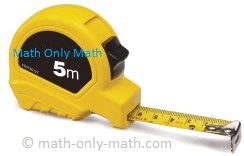 |
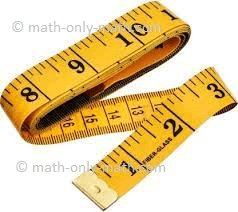 |
The ruler shown below is generally used by students for measuring small distances such as distance between two points.
Very long distances such as distance between two towns, are measured in kilometres.
We denote:
1. Metres by m
2. Centimetres by cm and
3. Kilometers by km
1 km = 1000 m.
Review
Measurement of Length:
Measuring in Centimetre:
Centimetre is useful for measuring small lengths.
The sign of centimetre is 'cm'.
Meter is useful for measuring big lengths.
The sign of meter is 'm'.
100 cm = 1 m
• To change 'm' into 'cm' put two zeros (00) to the right of the number.
For example: 5m ➡ Put two zero (00) ➡ 500cm
• When 'm' is given with dot (.) then remove the dot (.), to get cm.
For example: To change 2.46 m into cm ➡ remove dot (.) ➡ we get 246 cm
So, 2.46 m = 246 cm
• To convert 'm' and 'cm' into 'cm' change the 'm' to 'cm' and then add the 'cm'.
For example: Change 5 m 21 cm into cm ➡ 5 m × 100 = 500 cm
Add the cm, 500 cm + 21 cm = 521 cm
So, 5 m 2 cm = 521 cm
Measuring in Kilometer:
Kilometer is useful for measuring very long lengths. The sign of kilometer is 'km'.
1000 m = 1 km
• To change km into m, multiply by it 1000 or put 3 zeros on the right.
Now, change 5 km into m
5 km = 5 × 1000 m = 5000 m
• To change km and m into m, change km into m and then add m.
Now, change 2 km and 510 m into m
2 km × 1000 = 2000 m
Add them; 2000 m + 510 m = 2510m
• To change m into km, divide m by 1000 the quotient in it is km and remainder in it is m or remove 3 zeros from the right.
Now, change 4956 m into km
4956 divided by 1000 = quotient 4 and remainder 956
So, 4956 m = 4 km 956 m
Measuring the Length of an Object Using a Ruler:
To measure the length of an object using a ruler, we place the Object alongside the ruler, with one end of the object at the zero (0) mark on the ruler as shown below:
Then, we take the reading at the other end of the object. This gives us the length of the object. So, the length of the above pin is 3 cm.
Questions and Answers on Measurement of Length:
1. Ring the longer object.
2. What are the lengths of these rulers? Use a paper clip to measure the length. Then fill in the blanks.
(i) It is about __________ paper clips long.
(ii) It is about __________ paper clips long.
Answer:
2. (i) 6
(ii) 3
3. Tick the correct answer.
Answer:
3. (i) C
(ii) A
4. Tick the correct answer.
Answer:
4. (i) B
(ii) A
5. Fill in the blanks.
Answer:
5. (i) 3
(ii) 3
6. Which part of your body will you use to measure the following objects?
(i) Book
(ii) Table
(iii) Classroom
7. Look at the picture and fill in the blanks:
(i) The length of the blackboard is about ………… handspans.
(ii) The length of matrasses is about …………footspan.
Answer:
7. (i) 7
(ii) 10
(iii) 6
8. Write T for true and F for false.
(i) Cubic is shorter than handspan.
(ii) Footspan is shorter than stride.
Answer:
8. (i) F
(ii) T
Questions and Answers on Non-Standard Unit of Length:
9. Look at the picture and fill in the blanks:
|
(i) The ribbon is about ………… clips long. | |
|
(ii) The pencil is about ………… clips long. | |
|
(iii) The toothbrush is about ………… clips long. | |
|
(iv) The book is about ………… clips long. |
Answer:
9. (i) 8
(ii) 4
(iii) 6
(iv) 3
10. Look at the picture and fill in the blanks:
|
(i) |
The length of the table is about ………… cubits. | |
|
(ii) |
The length of the carpet is about ………… footspans. | |
|
(iii) |
The length of the tile in the classroom is about ………… footspans. |
Answer:
10. (i) 2
(ii) 4
(iii) 2
11. Match the things with the body parts that you will choose to measure the length.
Answer:
11. (a) → (iii)
(b) → (i)
(c) → (ii)
12. Measure these objects at home and fill in the blanks.
(i)
Length of my sofa is about __________ ribbons.
(ii)
Length of my table is about __________ ribbons.
(iii)
Length of my bottle is about __________ handspan.
(iv)
Length of my shorts is about __________ cubit.
Questions and Answers on Standard Unit of Length:
Measuring in Centimetre:
13. Fill in the blanks by converting into centimeters -
(i) 4 m = _____ cm
(ii) 6 m = _____ cm
(iii) 1.72 m = _____ cm
(iv) 6.17 m = _____ cm
(v) 6 m 54 cm = _____ cm
(vi) 2 m 19 cm = _____ cm
(vii) 7 m = _____ cm
(viii) 9 m = _____ cm
(ix) 2.12 m = _____ cm
(x) 3.08 m = _____ cm
(xi) 1 m 87 cm = _____ cm
(xii) 2 m 10 cm = _____ cm
(xiii) 8 m = _____ cm
(xiv) 1 m = _____ cm
(xv) 3.13 m = _____ cm
Answer:
13. (i) 400 cm
(ii) 600 cm
(iii) 172 cm
(iv) 617 cm
(v) 654 cm
(vi) 219 cm
(vii) 700 cm
(viii) 900 cm
(ix) 212 cm
(x) 308 cm
(xi) 187 cm
(xii) 210 cm
(xiii) 800 cm
(xiv) 100 cm
(xv) 313 cm
Measuring in Kilometer:
14. Fill in the blanks converting km into m:
(i) 2 km = _____ m
(ii) 6 km = _____ m
(iii) 8 km = _____ m
(iv) 31 km = _____ m
(v) 24 km = _____ m
(vi) 12 km = _____ m
Answer:
14. (i) 2000 m
(ii) 6000 m
(iii) 8000 m
(iv) 31000 m
(v) 24000 m
(vi) 12000 m
15. Fill in the blanks converting m into km:
(i) 2000 m = _____ km
(ii) 4000 m = _____ km
(iii) 9000 m = _____ km
(iv) 1000 m = _____ km
(v) 7000 m = _____ km
(vi) 3000 m = _____ km
Answer:
15. (i) 2 km
(ii) 4 km
(iii) 9 km
(iv) 1 km
(v) 7 km
(vi) 3 km
16. Change km and m into m:
(i) 2 km 432 m = _____ m
(ii) 4 km 600 m = _____ m
(iii) 3 km 276 m = _____ m
(iv) 5 km 321 m = _____ m
(v) 6 km 110 m = _____ m
(vi) 7 km 224 m = _____ m
Answer:
16. (i) 2432 m
(ii) 4600 m
(iii) 3276 m
(iv) 5321 m
(v) 6110 m
(vi) 7224 m
From Measurement of Length to HOME PAGE
Didn't find what you were looking for? Or want to know more information about Math Only Math. Use this Google Search to find what you need.

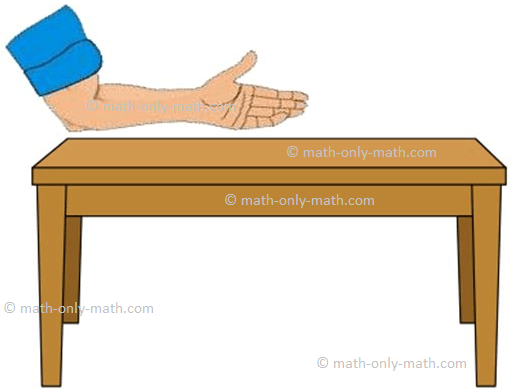

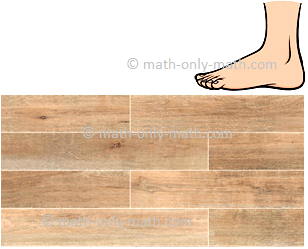
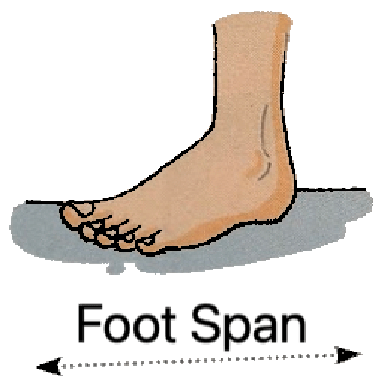
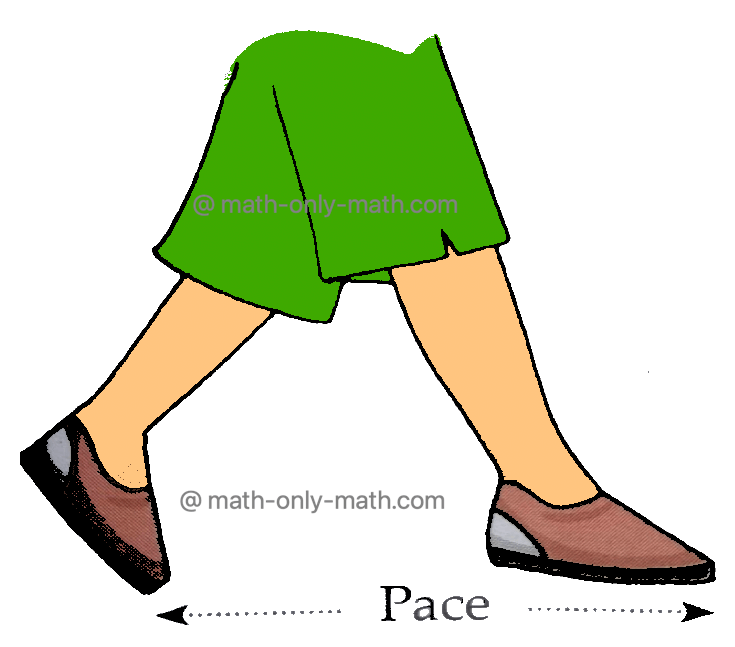
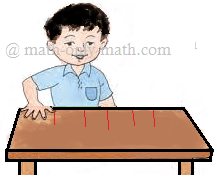
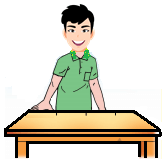
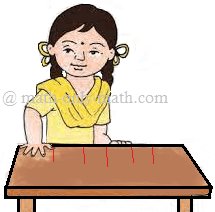
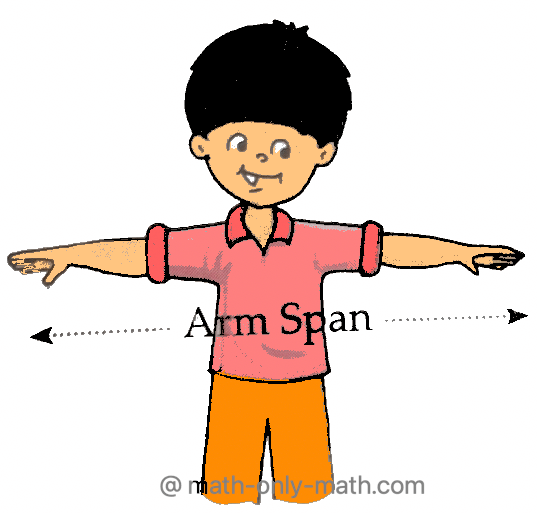

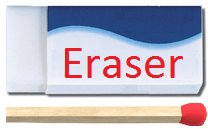



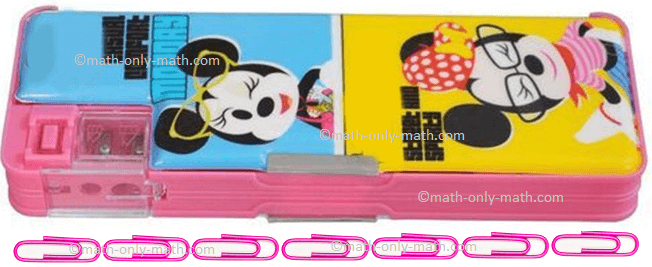
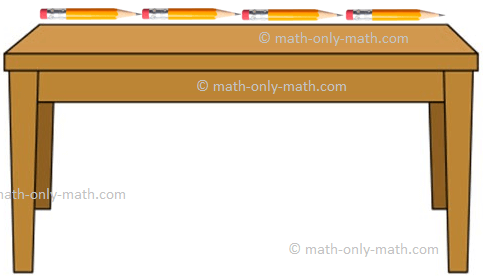






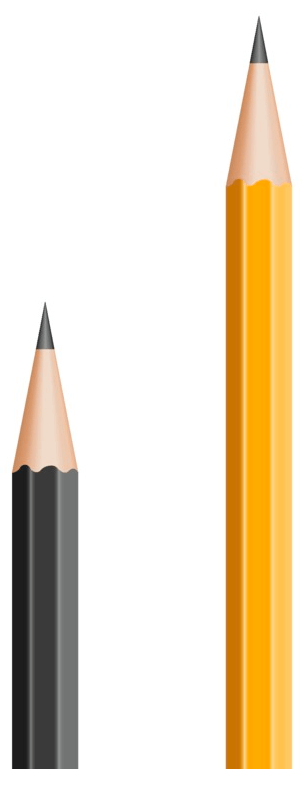





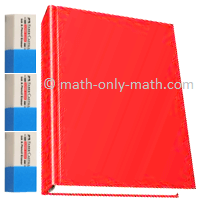
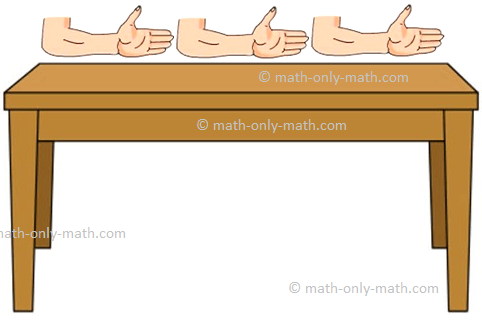
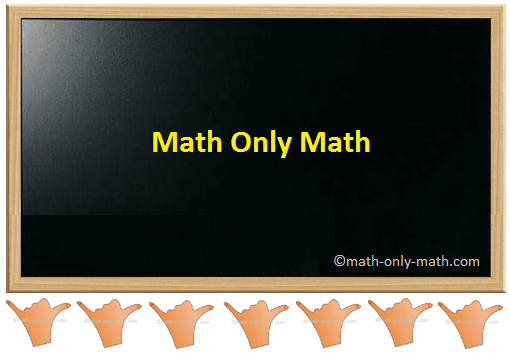
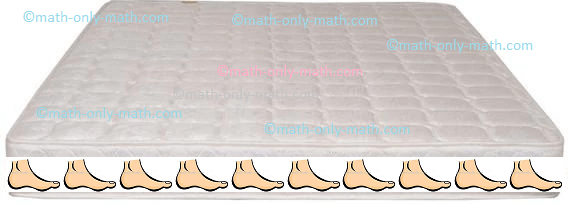
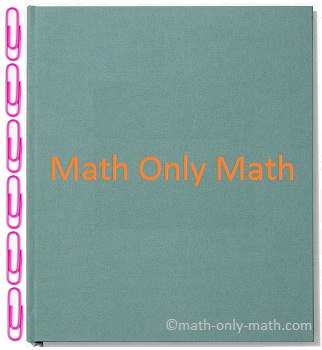



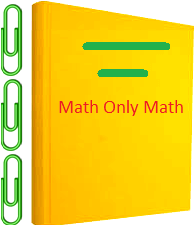
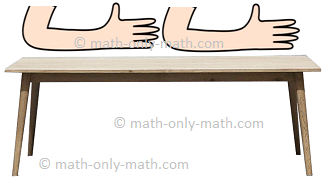
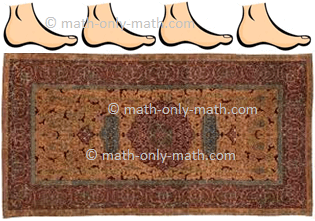
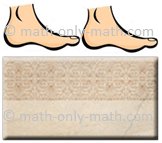
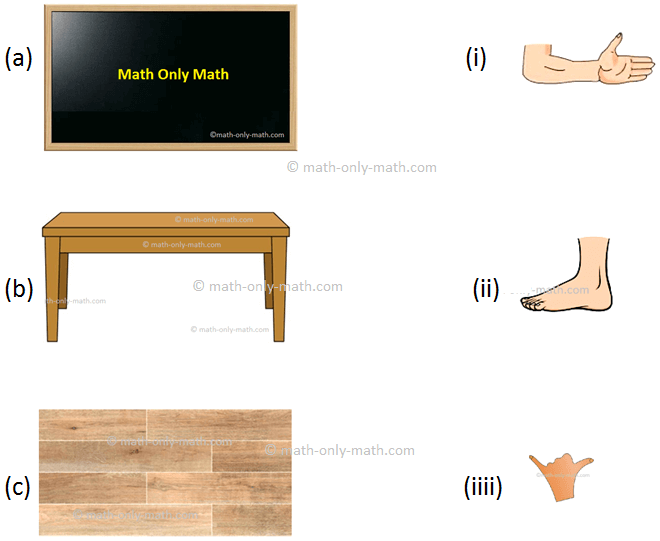
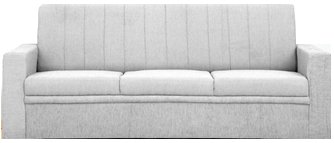
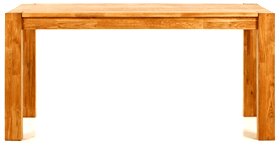

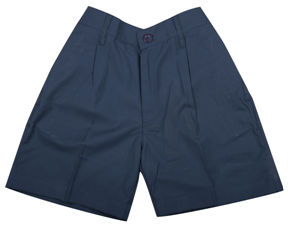


New! Comments
Have your say about what you just read! Leave me a comment in the box below. Ask a Question or Answer a Question.